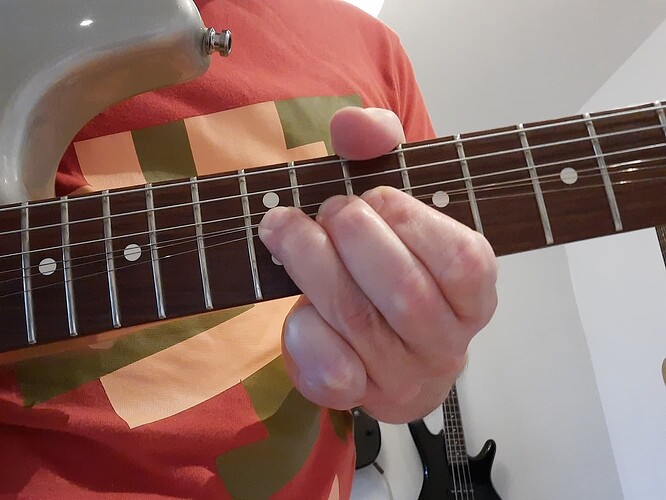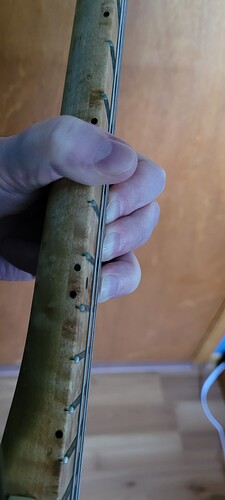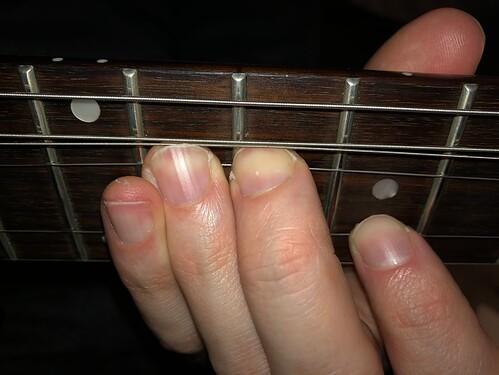I’ve struggled with muting bends quite a bit. I’ve tried with a form similar to what @Frylock posted but the problem I always run into, at least with my action/setup, is that the strings I’m trying to mute still end up pressing against the fret hard enough to ring out and I haven’t been able to find a middle/index finger orientation to prevent that.
Unison bends are even worse as I only have my middle finger to work with. However, I just stumbled upon this slight adjustment… here’s the form that doesn’t work for me:
It’s obvious from that picture why it’s not working… my middle finger is actually making the problem even worse! However, if I allow the adjacent string to be “pinched” between the tip of my ring finger and the nail of my middle finger, the string is held in place high enough over the fret not to make contact.
I only just stumbled upon this so I’m not sure if it’ll end up having issues in practice but so far it feels at least more reliable than what I was trying to do before.






